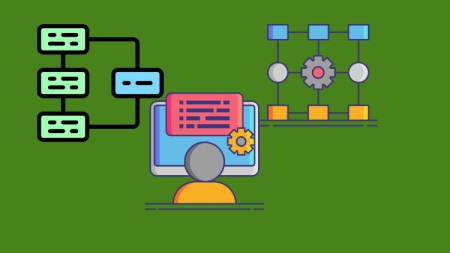Automate Web Scraping Using Python Scripts and Spiders
- 29.04.2021
- 192

MP4 | Video: h264, 1280x720 | Audio: AAC, 44.1 KHz, 2 Ch
Genre: eLearning | Language: English + .srt | Duration: 39 lectures (3 hour, 50 mins) | Size: 1.02 GB
Computer and internet required.
What you'll learn
Build and automate web scraping with Python Scripts
Build and automate web scraping with Spiders
Learn how to use Beautiful Library for data extraction
Learn to use Scrapy for data extraction
Learn how to inspect HTML elements
Learn to create and activate Python Virtual Environments
Learn to prototype web scraping scripts
Learn to scrape data using scrapy shell
Learn to scrape data from e-commerce products
Automate script to send emails
Requirements
Basic knowledge of HTML would be helpful
Description
Web scraping is the process of automatically ing a web page's data and extracting specific information from it. The extracted information can be stored in a database or as various file types.
Basic Scraping Rules:
Always check a website's Terms and Conditions before you scrape it to avoid legal issues.
Do not request data from a website too aggressively (spamming) with your program as this may break the website.
The layout of a website may change from to ,so make sure your code adapts to it when it does.
Popular web scraping tools include BeautifulSoup and Scrapy.
BeautifulSoup is a python library for pulling data (parsing) out of HTML and XML files.
Scrapy is a free open source application framework used for crawling web sites and extracting structured data
which can be used for a variety of things like data mining,research ,information process or historical archival.
Web scraping software tools may access the World Wide Web directly using the Hypertext Transfer Protocol, or through a web browser. While web scraping can be done manually by a software user, the term typically refers to automated processes implemented using a bot or web crawler. It is a form of copying, in which specific data is gathered and copied from the web, typically into a central local database or spreadsheet, for later retrieval or analysis.
Scraping a web page involves fetching it and extracting from it. Fetching is the ing of a page (which a browser does when you view the page). to fetch pages for later processing. Once fetched, then extraction can take place. The content of a page may be parsed, searched, reformatted, its data copied into a spreadsheet, and so on. Web scrapers typically take something out of a page, to make use of it for another purpose somewhere else. An example would be to find and copy names and phone numbers, or companies and their URLs, to a list (contact scraping).
Web scraping is used for contact scraping, and as a component of applications used for web indexing, web mining and data mining, online price change monitoring and price comparison, product review scraping (to watch the competition), gathering real estate listings, weather data monitoring, website change detection, research, tracking online presence and reputation, web mashup and, web data integration.
Web pages are built using text-based mark-up languages (HTML and XHTML), and frequently contain a wealth of useful data in text form. . A web scraper is an Application Programming Interface (API) to extract data from a web site. Companies like AWS and Google provide web scraping tools, services and public data available free of cost to end users.
Who this course is for:
Bners to Web Scraping
Bner Data Analyst
DOWNLOAD
uploadgig
https://uploadgig.com/file/download/Bcc8fd623460aec4/fWAOTI9V_.Automate_W.part1.rar
https://uploadgig.com/file/download/9c1b10e0dDbcfF96/fWAOTI9V_.Automate_W.part2.rar
rapidgator
https://rapidgator.net/file/96e3c592ea1828cc4dacedfa78b352c2/fWAOTI9V_.Automate_W.part1.rar.html
https://rapidgator.net/file/2fe4efb0b8e421881da51334d11e446f/fWAOTI9V_.Automate_W.part2.rar.html
nitroflare